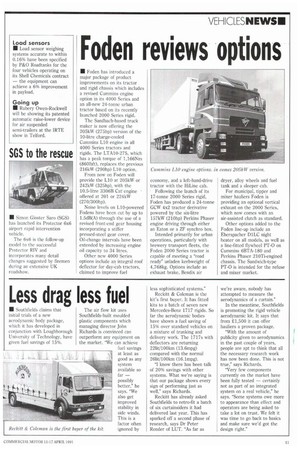Less drag less fuel
Page 13

If you've noticed an error in this article please click here to report it so we can fix it.
• Southfields claims that initial trials of a new aerodynamic body package, which it has developed in conjunction with Loughborough University of Technology, have given fuel savings of 15%. The air flow kit uses Southfields-built moulded plastic components which managing director John Richards is convinced can outperform any equipment on the market. "We can achieve fuel savings at least as good as any systern available so far — possibly better," he says. "We also get improved stability in side winds. This is a factor often ignored by less sophisticated systems."
Reckitt & Coleman is the kit's first buyer. It has fitted kits to a batch of seven new Mercedes-Benz 1717 rigids. So far the aerodynamic bodies have shown a fuel saving of 15% over standard vehicles on a mixture of trunking and delivery work. The 1717s with deflectors are returning 221it/100km (13.6mpg) compared with the normal 261it/100km (16.1mpg).
"I know there has been talk of 20% savings with other systems. What we're saying is that our package shows every sign of performing just as well," says Richards.
Reckitt has already asked Southfields to retro-fit a batch of six curtainsiders it had delivered last year. This has sparked off a second phase of research, says Dr Peter Render of LUT. "As far as we're aware, nobody has attempted to measure the aerodynamics of a curtain."
In the meantime, Southfields is promoting the rigid vehicle aerodynamic kit. It says that from £1,500 it can offer hauliers a proven package.
"With the amount of publicity given to aerodynamics in the past couple of years, people are apt to think that all the necessary research work has now been done. This is not true," says Richards.
"Very few components currently on the market have been fully tested — certainly not as part of an integrated system on a real vehicle," he says. "Some systems owe more to appearance than effect and operators are being asked to take a lot on trust. We felt it was time to go back to basics and make sure we'd got the design right."
















































































